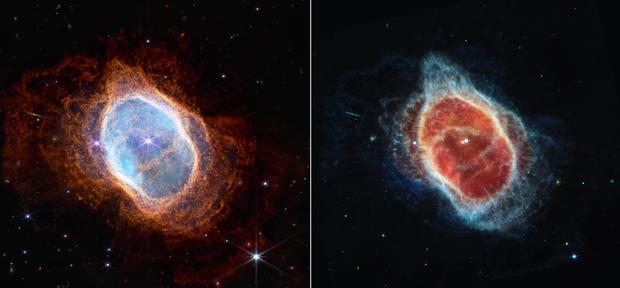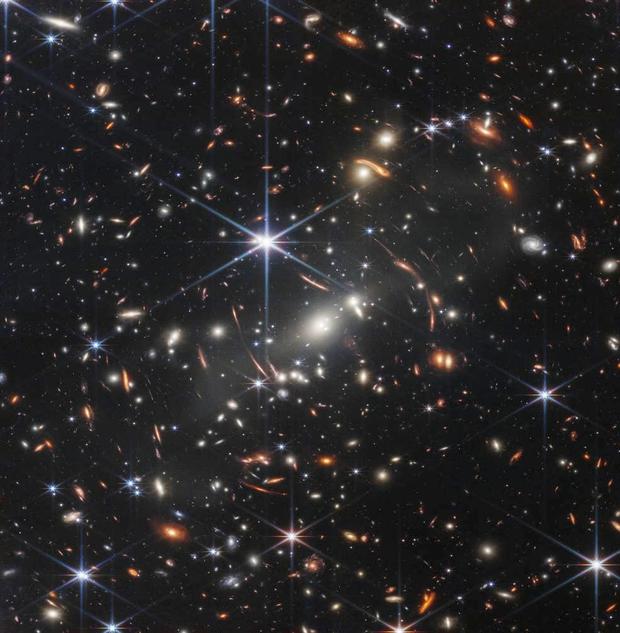After a presidential reveal Monday, NASA unveiled more spectacular “first light” pictures from the James Webb Space Telescope on Tuesday.
“Every image is a new discovery, and each will give humanity a view of the universe that we’ve never seen before,” said NASA Administrator Bill Nelson.
The images unveiled Tuesday followed an initial image release Monday at the White House when President Biden revealed a stunning, razor-sharp “deep field” look at a cluster of remote galaxies with numerous arcs of light, the distorted views of background galaxies magnified by the cluster’s combined gravity.
Looking farther back in space and time than ever before, to within a few hundred million years of the moment the universe exploded into being 13.8 billion years ago, the image represents “a new window into the history of our universe,” Mr. Biden said.
Said Nelson: “That light that you are seeing has been traveling for over 13 billion years, and by the way, we’re going back farther. This is just the first image. They’re going back about thirteen-and-a-half billion years. And since we know the universe is 13.8 billion years old, we’re going back almost to the beginning.”
The image was proof, if any was needed, that Webb is finally ready to begin science operations six months after its Christmas Day launch and years of technical problems, management miscues and billions in cost overruns.
In the six months since launch, scientists and engineers deployed and precisely aligned the 18 segments making up its 21.3-foot-wide mirror, unfurled a giant sunshade to help cool the optics to within a few degrees of absolute zero and carefully checked out and calibrated the observatory’s four instruments.
Unlike the iconic Hubble Space Telescope, which mostly observes light in the visible part of the spectrum, Webb is optimized to study longer-wavelength infrared radiation, allowing it to capture light from the dawn of the universe that’s been stretched out by the expansion of space itself over the past 13.8 billion years.
Capturing light from the first generation of stars and galaxies in the process of forming in the aftermath of the Big Bang is one of Webb’s primary objectives.
But the $10 billion telescope also will be used to tackle other outstanding questions, charting the evolution of galaxies through time, how they grow and merge in cataclysmic collisions, the life cycles of stars from birth to death by supernova; and the nature of exoplanets that are as common as grains of sand across the Milky Way.




